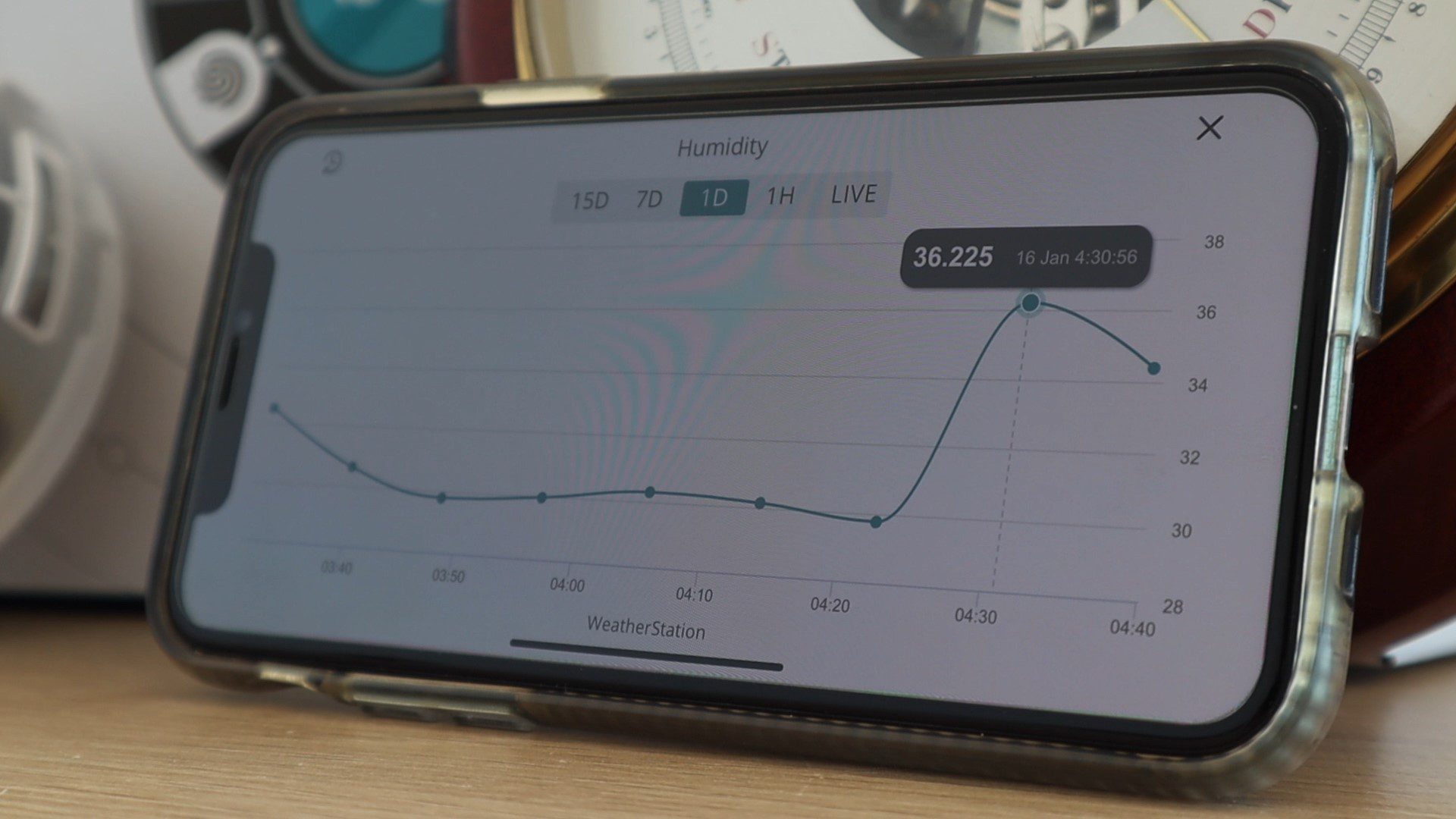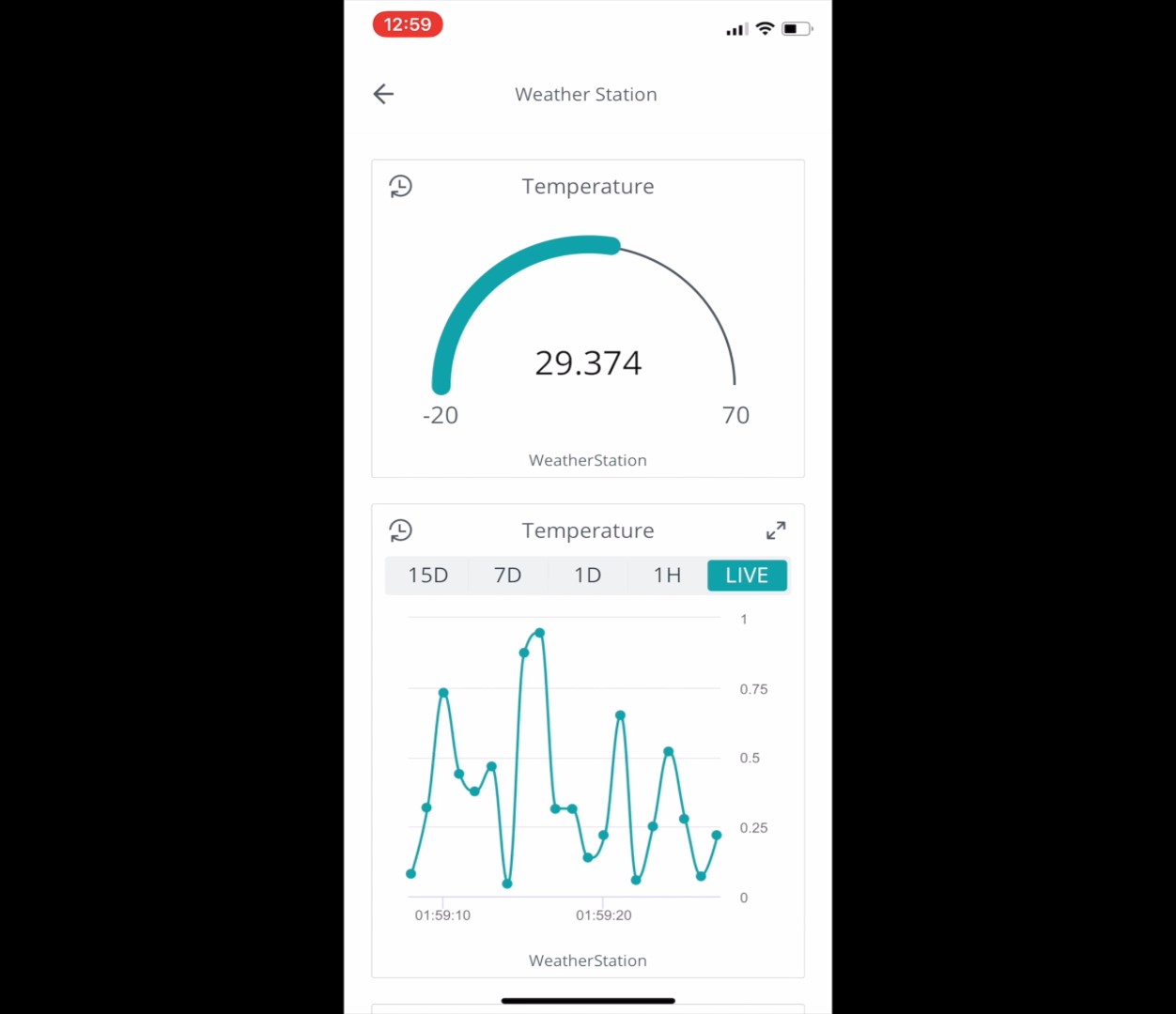Imagine a world where you can access your office desktop from the comfort of your living room or even while sipping coffee at a café halfway across the globe. Welcome to the era of IoT remote desktop over internet—a game-changing technology that’s transforming how we work, collaborate, and manage our digital lives. Whether you’re a tech enthusiast, a business owner, or simply someone who wants to stay connected, this innovation is here to make your life easier.
Let’s face it, the internet of things (IoT) has been making waves for years now. But when you combine IoT with remote desktop capabilities, the possibilities become endless. This isn’t just about checking emails or updating spreadsheets; it’s about creating an ecosystem where all your devices are interconnected, allowing you to control and access them seamlessly from anywhere in the world.
Now, I know what you’re thinking—“Is it really that simple?” The answer is yes, but there’s more to it than meets the eye. In this article, we’ll dive deep into the world of IoT remote desktop over internet, exploring its benefits, challenges, and everything in between. So grab a snack, get comfy, and let’s embark on this tech adventure together.
- Breaking Down Brittany Mahomes Net Worth Facts Amp Figures
- Decoding One Direction Member Colors Personality Amp Brand Secrets
What Exactly Is IoT Remote Desktop Over Internet?
At its core, IoT remote desktop over internet allows you to access and control your computer or server remotely using internet-connected devices. Think of it as extending the reach of your desktop beyond physical boundaries. Whether you’re using a smartphone, tablet, or another computer, you can connect to your primary system and perform tasks as if you were sitting right in front of it.
But wait, there’s more! With IoT integration, this setup becomes smarter, more secure, and far more efficient. Instead of relying solely on traditional remote desktop tools, IoT adds layers of automation, monitoring, and optimization. For example, you can set up automated alerts if someone tries to access your system without permission or configure specific devices to only allow connections during certain hours.
Here’s a quick rundown of why IoT remote desktop over internet is such a big deal:
- Daniel Radcliffes Age In 2001 The Untold Story Of Potters Start
- Why This Collab Matters Collaborative Edm Track Significance Now
- Access your files and applications from anywhere
- Enhanced security through IoT-enabled features
- Seamless integration with existing systems
- Cost-effective solution for businesses and individuals
And trust me, these benefits aren’t just hype. According to a report by Statista, the global IoT market is expected to reach $1.5 trillion by 2030, with remote connectivity solutions playing a significant role in driving growth. So yeah, this isn’t some passing trend—it’s the future of connectivity.
Why You Need IoT Remote Desktop Over Internet
Let’s break it down—why should you care about IoT remote desktop over internet? Well, for starters, it solves a lot of common pain points. How many times have you been stuck in a meeting and realized you forgot an important file on your computer back at the office? Or maybe you’re traveling and need to troubleshoot an issue on your home network. These situations can be frustrating, but with IoT remote desktop over internet, they become a thing of the past.
Another reason to consider this technology is its versatility. Whether you’re a small business owner managing multiple locations or a remote worker collaborating with teams across different time zones, IoT remote desktop over internet offers a flexible solution that adapts to your needs. Plus, it’s scalable, meaning you can start small and expand as your requirements grow.
Key Benefits to Consider
Here are some of the standout advantages of IoT remote desktop over internet:
- Increased Productivity: Access your work environment anytime, anywhere.
- Improved Security: Leverage IoT features like encryption, two-factor authentication, and real-time monitoring.
- Cost Savings: Reduce travel expenses and hardware costs by leveraging remote access.
- Enhanced Collaboration: Share screens, files, and applications seamlessly with team members.
These benefits aren’t just theoretical—they’re backed by real-world success stories. For instance, a survey conducted by Gartner found that companies adopting IoT-based remote desktop solutions saw an average productivity increase of 25%. That’s a pretty compelling reason to give it a shot, don’t you think?
How Does IoT Remote Desktop Over Internet Work?
Alright, let’s geek out for a moment and talk about the technical side of things. At its most basic level, IoT remote desktop over internet works by establishing a secure connection between your local device and the remote system. This connection is facilitated by protocols like RDP (Remote Desktop Protocol) or VNC (Virtual Network Computing), which allow you to send commands and receive data in real-time.
Now, here’s where IoT comes into play. By integrating IoT sensors and devices, you can add layers of intelligence to the process. For example:
- IoT sensors can monitor network traffic and flag suspicious activity.
- Smart devices can automatically adjust settings based on user preferences.
- Machine learning algorithms can predict potential issues and resolve them before they become problems.
It’s like having a personal IT assistant working behind the scenes to ensure everything runs smoothly. And the best part? Most of this happens without you even realizing it. The system just works, leaving you free to focus on more important tasks.
Top Tools for IoT Remote Desktop Over Internet
Not all tools are created equal when it comes to IoT remote desktop over internet. To help you navigate the crowded market, here’s a list of some popular options:
1. TeamViewer
TeamViewer is a well-known name in the remote desktop space, and for good reason. It offers a user-friendly interface, robust security features, and seamless IoT integration. Plus, it works across a wide range of devices, making it a great choice for both personal and professional use.
2. AnyDesk
If speed is your priority, AnyDesk might be the way to go. This tool focuses on delivering lightning-fast connections without compromising on security or functionality. It also supports IoT devices, making it a solid option for modern users.
3. Microsoft Remote Desktop
As the name suggests, Microsoft Remote Desktop is designed specifically for Windows users. It offers tight integration with other Microsoft services and supports IoT features like automated updates and remote diagnostics. If you’re already in the Microsoft ecosystem, this could be the perfect fit.
Setting Up IoT Remote Desktop Over Internet
Setting up IoT remote desktop over internet isn’t as complicated as it sounds. Follow these simple steps to get started:
- Choose a reliable tool that supports IoT integration (we mentioned a few earlier).
- Install the necessary software on both your local and remote devices.
- Configure settings to ensure a secure connection, including enabling encryption and setting up authentication methods.
- Test the connection to make sure everything is working as expected.
Pro tip: If you’re new to IoT remote desktop over internet, consider starting with a trial version of the software to get a feel for how it works. Most providers offer free trials or limited versions that should be sufficient for testing purposes.
Security Concerns and Best Practices
Let’s be real—security is always a concern when it comes to remote access. After all, you’re essentially opening a door into your system, and if that door isn’t properly secured, bad things can happen. That’s why it’s crucial to follow best practices when setting up IoT remote desktop over internet.
Here are a few tips to keep your system safe:
- Use strong, unique passwords for all accounts.
- Enable two-factor authentication whenever possible.
- Regularly update your software and firmware to patch vulnerabilities.
- Limit access to trusted devices and IP addresses.
Additionally, consider implementing IoT-specific security measures, such as network segmentation and intrusion detection systems. These steps may seem like overkill, but trust me, they’re worth it in the long run.
Real-World Applications of IoT Remote Desktop Over Internet
So, how exactly is IoT remote desktop over internet being used in the real world? Let’s take a look at a few examples:
1. Healthcare
Hospitals and clinics are using IoT remote desktop over internet to access patient records and medical imaging from anywhere. This allows doctors to consult with specialists and review cases without being physically present, improving patient outcomes and reducing costs.
2. Education
Schools and universities are leveraging this technology to deliver remote learning experiences. Students can access course materials, participate in virtual labs, and collaborate with classmates—all from the comfort of their homes.
3. Manufacturing
In the manufacturing sector, IoT remote desktop over internet is used to monitor and control industrial equipment. This enables engineers to perform maintenance and troubleshooting without having to be on-site, saving time and resources.
Challenges and Limitations
Of course, no technology is without its challenges. Here are a few things to keep in mind when considering IoT remote desktop over internet:
- Bandwidth Requirements: High-quality connections require significant bandwidth, which may not be available in all areas.
- Compatibility Issues: Not all devices and operating systems play nice with IoT remote desktop solutions.
- Learning Curve: While the basics are easy to grasp, mastering advanced features can take some time.
Despite these limitations, the benefits of IoT remote desktop over internet far outweigh the drawbacks for most users. It’s all about finding the right balance and choosing the tools that work best for your specific needs.
Future Trends in IoT Remote Desktop Over Internet
Looking ahead, the future of IoT remote desktop over internet looks brighter than ever. Here are a few trends to watch:
- Increased adoption of edge computing to reduce latency and improve performance.
- Integration with emerging technologies like 5G and artificial intelligence.
- Expansion into new industries, including retail, finance, and entertainment.
As the world becomes increasingly connected, the demand for IoT remote desktop over internet will only continue to grow. And with advancements in technology, we can expect even more innovative solutions in the years to come.
Conclusion
There you have it—everything you need to know about IoT remote desktop over internet. From its origins and benefits to real-world applications and future trends, this technology is reshaping the way we interact with our digital environments. Whether you’re a tech-savvy individual or a business owner looking to streamline operations, IoT remote desktop over internet offers a powerful solution that’s worth exploring.
So, what are you waiting for? Dive in, experiment, and discover the possibilities for yourself. And don’t forget to share your thoughts and experiences in the comments below. Your feedback helps us improve and create content that truly resonates with our audience. Until next time, stay connected and keep innovating!
Table of Contents
- What Exactly Is IoT Remote Desktop Over Internet?
- Why You Need IoT Remote Desktop Over Internet
- How Does IoT Remote Desktop Over Internet Work?
- Top Tools for IoT Remote Desktop Over Internet
- Setting Up IoT Remote Desktop Over Internet
- Security Concerns and Best Practices
- Real-World Applications of IoT Remote Desktop Over Internet
- Challenges and Limitations
- Future Trends in IoT Remote Desktop Over Internet
- Conclusion
- Discover Montana Jordan Impact Amp Achievements Unveiled
- Decoding One Direction Member Colors Personality Amp Brand Secrets


